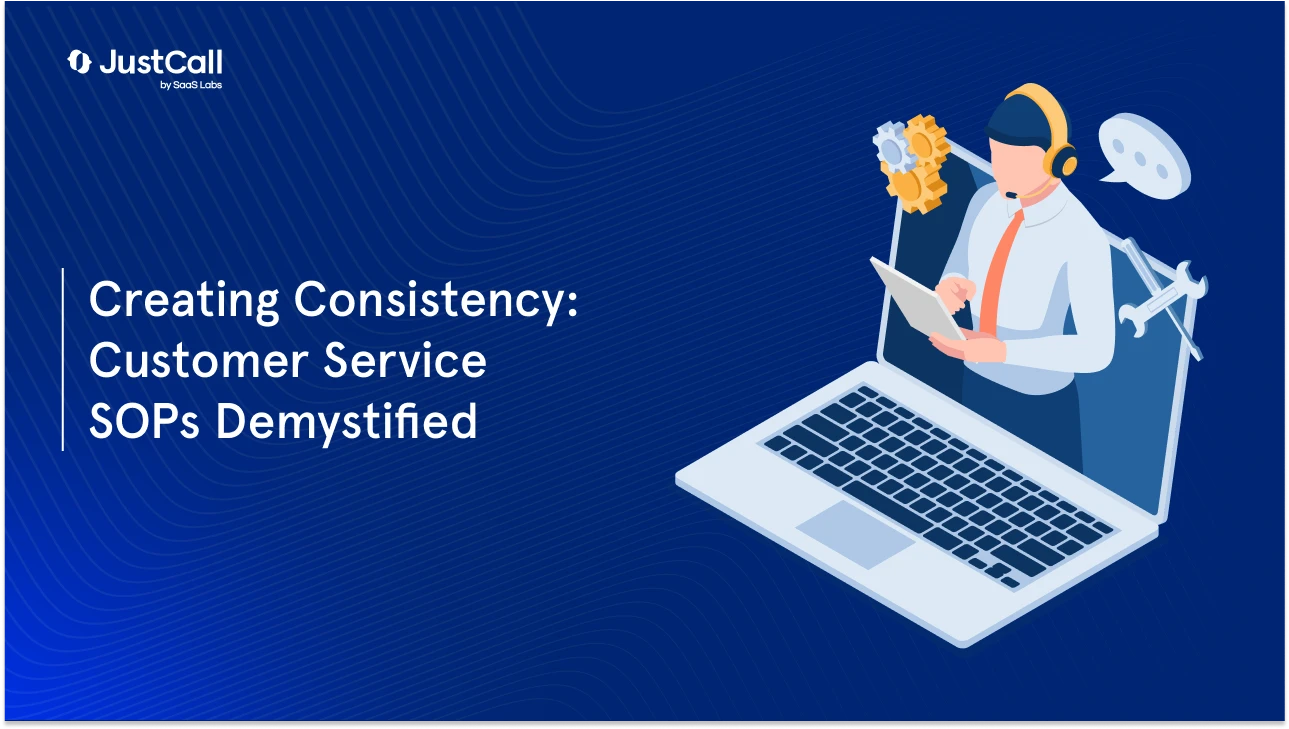Consistency is the key to reinforcing brand identity. Consistent customer service is a hallmark of reliability and professionalism, attracting customer trust, loyalty, and long-term business. As such, it is no surprise that nearly seven out of ten brands leveraged consistency to up revenue by 10%.
That said, businesses often struggle with delivering consistent support for a positive customer experience. Moreover, according to McKinsey, resources spent on customer experience without securing consistency are ineffective investments.
To mitigate inconsistency, you need to understand its root causes and then tackle them.
What Causes Inconsistent Customer Service?
Inconsistent customer service is more of a symptom than a disease. It can indicate an underlying problem – or even a bunch of problems. Here are the most common ones:
Lack of Standard Operating Procedures
Everyone has different problem-solving skills, which is why different customer service agents will handle similar problems differently. Some would offer coupons or refunds and call it a day, while others would put in the effort to address the customer issues before handing out such goodies. Such variations are a result of poor customer support standardization.
The absence of a clear set of guidelines or protocols results in varying levels of service quality. Research tells us that 81% of customers seek the same level of service every time they interact with the business. So, laying out SOPs to achieve a consistent customer support experience is crucial.
Poor Training and Onboarding
Training and onboarding are level playing fields that bring employees to par. Improper onboarding results in skill and knowledge gaps right from the entry level. The quality of service rendered by freshers would be vastly different from that of experienced new recruits, even if they’re both just starting out in your company.
These gaps perpetuate and widen over time, more so when companies follow a “set it and forget it” routine for employee training and fail to reinforce company values and protocols.
High Agent Turnover
The average customer service agent turnover rate hovers at a dangerous 45%. With the replacement of nearly half your workforce, service delivery disruption and inconsistencies are bound to show up.
Companies may carry out rampant hiring to make up for the employees who quit and, due to the urgency of things, fast-track onboarding or skip it entirely. As a result, the service delivery by previous, well-trained employees would vary from those finding their grounds.
Rapidly Changing Policies
Frequent changes to organizational policies, terms, and processes can leave customer service agents high and dry. It aggravates if your business lacks an internal communication system to disseminate the latest information on products, services, policies, etc.
For instance, imagine receiving an overwhelming response to a recently launched product that has created a good amount of buzz, but your reps are unable to service such requests because they did not receive the product sheet. What a nightmare of a missed opportunity!
Cultural and Lingual Differences
The case of Chevrolet’s Nova failing to take off in the Spanish-speaking markets is a classic cautionary tale that speaks about cultural and lingual topographies. It talks about how the company pushed to sell a car that literally translated to “No Go.”
Although debunked, the story serves as a reminder that cultural sensitivity and lingual comprehension are vital to global companies. Not just the actual medium of communication and the cultural context but also the non-verbal patterns of communication.
Such nuances, if left unchecked, could come in the way of customer support standardization.
Experience The AI-Powered Ccaas Platform 6,000+ Customers Trust
How to Establish Standard Operating Procedures in Customer Support?
Now that you’re more in touch with the issues plaguing your processes, here’s a quick guide to building Standard Operating Procedures (SOPs) for consistent customer service:
Involve Key Stakeholders
First, you need to get a real-world idea of the challenges and opportunities in your company’s customer service framework.
To do this, round up the key stakeholders and consult them. Ask them about the hits and misses, improvement areas, innovations, and expectations from customer support standardization. The diversity of thought and experiences will offer a wide perspective on customer support improvement.
Moreover, such collaborative action resting on the foundations of active and intentional communication improves the success rate of such initiatives. So, keep your employees involved and engaged throughout to improve the stickiness of the SOP and increase compliance.
Define Standards & Benchmarks
Customer service standards come in various flavors. You have speed, accuracy, empathy, accessibility, efficiency – the list goes on. However, not all of these carry equal weight.
For instance, some companies may prioritize accuracy over speed, while others may focus on making customer support more humane than purely efficient. Start by defining such standards and corresponding metrics.
Response times could denote speed, while the customer success ratio could indicate accuracy. Then, review past performances to set benchmarks for each parameter. Such standards would define the minimum performance expected from your customer support employees.
Prepare for Exceptions
Almost every customer support agent must have experienced instances where the situation does not allow them to go by the book. As such, while standard operating procedures cover frequently occurring scenarios, they should also account for the outliers.
Think of it as an escape hatch for your customer support reps when things enter the grey area. And so, prepare an escalation matrix to handle unprecedented situations.
Document & Communicate Everything
Customer support standardization aims to create a living document that summarizes the brand. It should serve as a refresher on crucial things like:
- Brand guidelines
- Company values
- Brand voice
- Standard responses for queries, requests, escalations, etc.
This document should be the bible for your customer service team. Also, circulate this almanac widely and make it accessible to all so that nobody misses out on its value.
Remember, you must communicate all internal or external changes to company policies, guidelines, product lines, etc., to enable and empower your support agents.
Implement Technology Solutions
Technology will play a critical role in making customer service consistent. Interestingly, there are many ways to incorporate technology within customer service processes.
For one, you can set up support process automation through chatbots and self-service portals that can handle routine and repetitive customer queries without any bias and long hold times.
At the same time, integrated contact center software solutions can enable and empower customer service agents to go the extra mile. You can even leverage it to strengthen internal communications.
Such technological interventions can minimize load for seven out of ten agents! In short, technology is a staple answer, regardless of the question.
Offer Training and Support
A surprising 59% of employees claim not to receive workplace training and are often self-taught. Companies should address this worrying trend by formulating self-paced, agent-focused training programs to reinforce learning.
Such training should be iterative and ideally personalized to combat agent-specific issues to further hone their capabilities.
While one-on-one training led by support managers and leaders sounds like an impossible feat (and a resource drain), a data-driven AI-powered coach can personalize training for every agent and make it more impactful. This approach will attract a multifold ROI on such an investment!
Strengthen Processes
An SOP must evolve continuously in response to changing market conditions, customer expectations, and agent feedback. So, make it a point to review it periodically for maximum effectiveness and efficiency.
Once again, every review cycle must result in the circulation of the modified SOP so that everyone’s on the same page at all times.
Consistency: The Key to Positive Customer Experience
If consistency were a muscle, SOP would be the exercise to train it. This thought makes customer support standardization your first step into the world of brand building and developing a customer-first mindset.
Tools like JustCall can be instrumental in standardizing customer support in more ways than one. For starters, it aids in efficient training and onboarding of employees while making it recurring and agent-specific.
Being proactive on this front buffers the impact of knowledge gaps, skill deficiencies, turnover rates, and rapid expansion. Plus, it strengthens communication channels, internally and externally, to add another layer of consistency to customer support.
Once you’re down this path, benefits like higher profit margins, business scalability, and customer loyalty will naturally follow!












